
 |
Monocots and Dicots Differences and Similarities
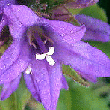

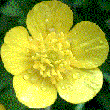
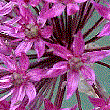
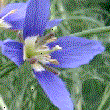
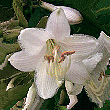
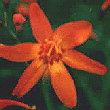
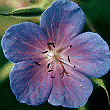
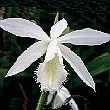
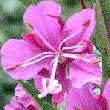
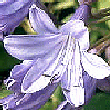
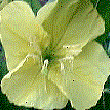
We can't see inside a seed, but as soon as it germinates, we can tell if a plant is a monocot or a dicot. A monocot has only one seed leaf (monocot is short for 'monocotyledon'. A cotyledon is a seed leaf, and 'mono' means one). This seed leaf is usually the same shape as the adult leaf, long and thin, and the leaf veins nearly always run parallel to the central midrib. Sometimes, the adult leaves are pinnate, as in many palms, but the veins are parallel on each leaflet. There are several monocot plant families that are instantly recognisable. Many food plants are grasses. So crops like wheat, oats, barley and sweetcorn are all monocots. Palms, Orchids, and most bulbous plants are monocots.
A dicot has two cotyledons (dicot is short for 'dicotyledon', and 'di' means two). The seed leaves are usually rounded and fat, because they are the two halves of the seed. The first true leaves can be many different shapes, from long and thin to rounded or palmate. Most trees and shrubs and many garden annuals and perennials are dicots, and there are many more species of dicots than there are monocots.
Seeds need a supply of food to support the embryo plant until it can collect its own food. In monocots, there is usually a supply of food, called endosperm, inside the seed coat but separate from the cotyledon. In dicots, the cotyledons contain the endosperm. There are exceptions to this, and some seeds of monocots do not contain endosperm.
As well as the fact that a monocot has only one seed leaf compared to the two seed leaves of a dicot, there are other clues which tell you whether a plant is a monocot or a dicot, which is useful if you want to identify a plant that is mature and already flowering.
We can see from the list of monocot plants above that many monocots have a single unbranched stem which dies down each year. They are herbaceous. The leaves are usually long and thin, and if we look closely, we can see that the veins go straight up and down the leaf, or from the middle of the leaf to the edge in parallel lines. Leaves of dicots come in many different shapes, and the veins spread out from the central midrib and criss-cross all over the leaf, rather like the branches of a tree.
Most monocots are small herbaceous plants, whereas dicots come in all shapes and sizes. One of the reasons for this is that large plants need a good support system, which is provided in dicots by the woody stem and root. Monocots do not often grow into trees, because they do not have any woody tissue. Woody tissue grows in distinct rings, as we can see if we look at the cut surface of a branch. In the middle is the heartwood, the older layers that have stopped growing, then a circle of growing tissue, then the outer layer. The part of the stem or trunk that grows is full of groups of pipes that carry water from the roots to the top of the plant and food to the rest of the plant from the leaves. These are called vascular bundles. New pipes grow each year, and the pipes in the inner rings stop carrying water and get squashed closer together. This makes the middle of the stem tough and strong so it can support the stem. Because new rings of pipes grow each year, the stem or trunk grows wider each year. This is called secondary growth. Because there is growth around the stem as well as at the tip, a dicot can produce new growing points or branches if the tip is cut or damaged.
The stems of monocots do not grow like this. In most cases, the whole stem dies down each year, and a new stem grows. The vascular bundles are not organised to form continuous pipes, but are scattered through the stem. The stems do not grow wider each year, but start again so all the growth is new sapwood, which is soft and fleshy. The top of the stem is the only growing point, so branches or side shoots can not be produced. There is a meal called 'millionaire's salad', which is the heart of the top of the Cabbage Palm. It is expensive because the whole tree must be killed to produce it. Because a Palm does not produce secondary tissue, but can only grow from the tip, it cannot grow any new branches.
Another reason dicots can grow into large plants is because they often have a long tap root which can grow deep into the ground to find food and water. Monocots start off with a tap root, but this dies soon after germination, and is replaced by short adventitious or fibrous roots that grow from the bottom of the stem. Because they only have short roots, monocots need some other way to get food when they begin to grow again in the spring, so they often have bulbs or corms which contain a supply of food to keep them going until their new roots and leaves have formed.
When plants are flowering, we can often distinguish monocots from dicots. Flowers usually have their parts in circles, with the stigma and stamens in the middle, then the petals, with the outer ring, called the calyx, formed by the sepals. In monocots, the parts of the flower are usually in threes. There is usually only one stigma, with three stamens and three petals and three sepals. Very often, the three sepals are the same colour as the petals, and they are joined to them in a single ring, so they look like six petals. When this happens, they are all called tepals. Sometimes, some parts of the flower are missing. For instance, Grasses don't have petals. The flowers of a dicot usually have their parts in fours, or fives, or sixes. There may be the same number of stamens as petals, or there may be more. The calyx is usually in a separate ring under the flower, and is usually green. It may have the same number of sepals as petals, or fewer sepals than petals.
If you could see it, an individual grain of pollen would also give you a clue. The pollen grains of monocots usually have one ridge from top to bottom. Pollen grains of dicots usually have three ridges.
In monocots, the seed pod usually has three parts, because the carpel that they grew from has three parts. The seed pods of dicots can have just one part or many parts.
There is another thing that occurs in monocots that doesn't happen in dicots, and something that happens in dicots but not in monocots. Sometimes the bottom of the old leaf is wrapped around the new shoot of a monocot (as in grasses). This is called a sheath. And sometimes there is a small leafy growth at the bottom of a leaf or at the joint of a dicot stem. This is called a stipule.
This is only a rough guide to distinguishing monocots from dicots. Not all the differences apply in all cases. Like everything else in nature, plants do not have to follow the rules we have invented to try and classify them!
~~~~~~~~~~~~~~~~~~~~~~~~~~~~ Other entries with information which might be useful
Chart showing the differences between monocots and dicots, with photographs
Diagram of a flower
Diagram of a seed
Bulbs, Tubers, Corms and Rhizomes
Leaf Shapes and Arrangements
And a useful website: Berkeley Natural History Museums
| Back to the Index of Technical Terms |
|---|